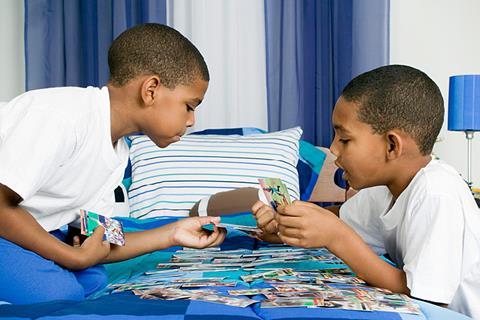Learners are often familiar with popular board games. Inventing new games (or adapting familiar games) can often produce materials that motivate students to talk and practise language.

- The basic all-purpose board game
- For most of these ideas you need to make a basic board. On a large piece of paper (e.g. A3) use a thick pen to draw a path of board game squares in a continuous route e.g. an oval (with the last square joining onto the first).
- The topic road
Write one topic in each square e.g. 'Friends' or 'Sport' or 'TV'. Learners play in groups, throwing the dice and moving their counter from square to square When they land on a square they should talk fluently for 30 seconds on that topic. If they succeed they keep their piece on the square; if not they must go back where they were before. The winner is the person who has got furthest when you stop the game. If you have a higher level class, you could make more demanding topics e.g. 'Climate change' or 'Noise pollution' or using questions such as 'Are men or women better drivers?' - Revision cards
Instead of writing topics on the board, leave it blank. Copy out a range of revision questions (grammar, vocabulary etc) and cut them up into separate cards. When a learner lands on a square they take a card. If they can answer the question they stay on the square. - Learners invent their own game
In groups of 3 or 4 the learners get a basic board. They must first discuss and agree a theme for a game (e.g. 'Olympics' or 'Detectives') adding any extra pictures or text as necessary to the board. They must now work out the details of a game that could be played using the board and then write down the rules clearly. (Remind the class how to use imperatives!). When they are ready, combine groups together to make larger groups. Each half of the group now tries to understand the rules and play the other half's game. - Board words
Some games work well on the blackboard. Draw a blank grid about 15 squares wide and high. Write one word in the middle of the grid, one letter to a square e.g. "house". Divide the class into teams, who take it in turns to play. The first team must make a new word between 3 and 7 letters long which connects to the word already on the board. e.g.
Give the team one point for each letter in their word. The next team then tries to add another new word that connects to any previously made word. If you want to be strict you can demand that wherever a letter is adjacent to another it must make a word - though this makes the game more difficult.c h o u s e p
Imaginative materials

Ever wondered what to do with your old receipts? Well stop wondering! Jim Scrivener gives us some great ideas for using everyday random items such as receipts, timetables and bags, plus other inventive ideas to brighten up your lessons.
- 1
- 2
- 3
- 4
 Currently
reading
Currently
reading
Imaginative materials: board games for teaching English
- 6
- 7
- 8
- 9
- 10
- 11
- 12
- 13
- 14
- 15
- 16
- 17
- 18
- 19
- 20














1 Reader's comment